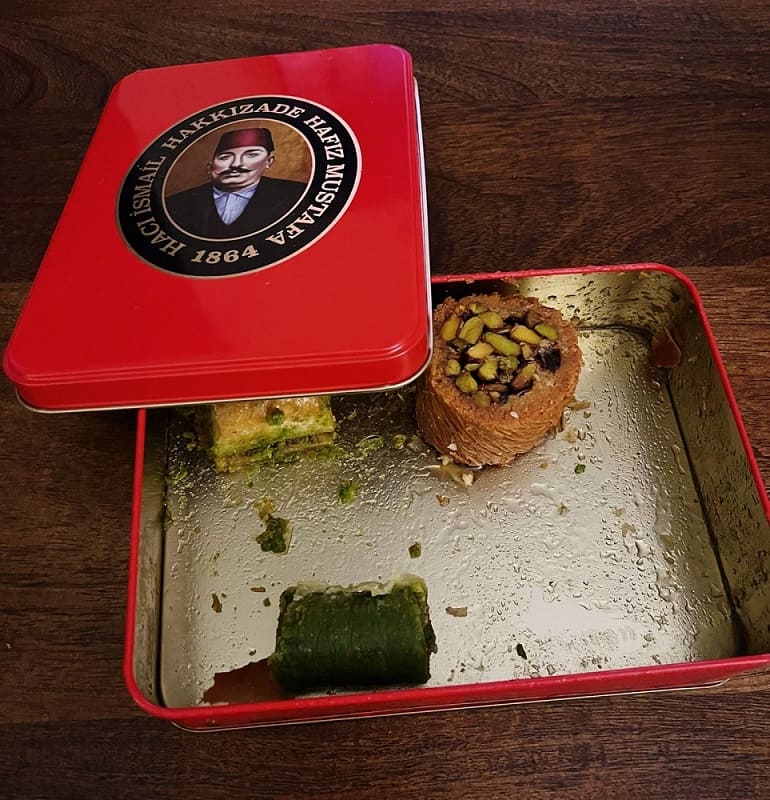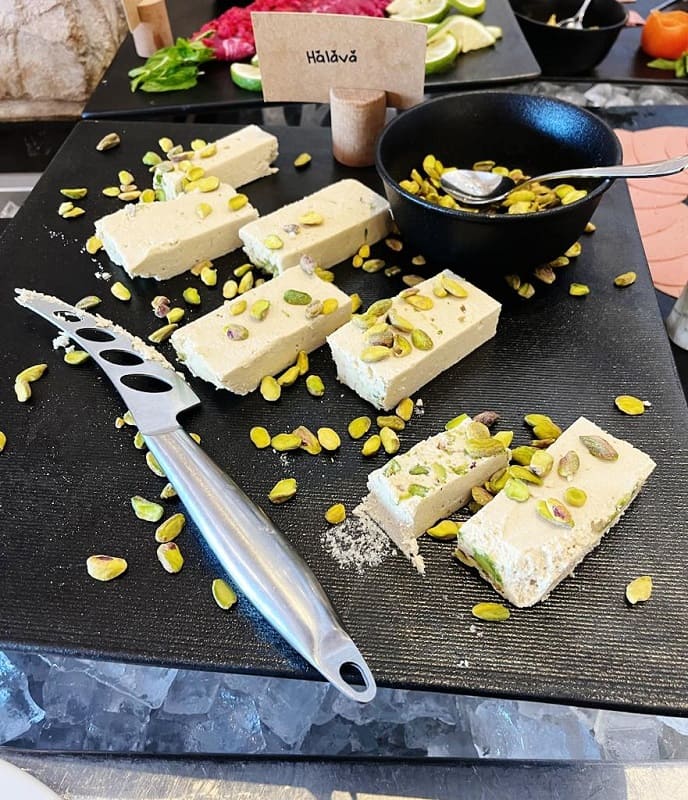When it comes to Middle Eastern desserts, two names stand out as both exquisite and deeply rooted in the region's culinary traditions: baklawa and halvada. These sweet treats are renowned for their intricate preparation methods and the lavish use of one particular ingredient – pistachios. In September, I ate several Middle Eastern desserts, halvada in Jordan and Turkish baklawa.
Baklawa: A Turkish Treasure
I had the privilege of savoring Turkish baklawa from Hafiz Mustafa 1864, and it was a revelation in taste and texture. Interestingly Hafiz Mustafa 1864 is also available on Amazon. Baklawa is a rich pastry made from layers of thin phyllo dough, generously filled with a mixture of crushed pistachios, sugar, and a hint of cinnamon. The layers are meticulously brushed with clarified butter before baking to a golden perfection. What sets Turkish baklawa apart is the use of top-quality pistachios that give it a distinctively nutty, buttery, and slightly sweet flavor.

Halvada: A Jordanian Delight
During my visit to Petra in Jordan, I had the opportunity to taste halvada, a traditional Middle Eastern sweet that has its roots in the region's ancient culinary heritage. Halvada, also known as halawet el jibn, consists of a delicate, thin layer of sweetened cheese dough that is filled with a mixture of finely ground pistachios and sugar. The dough is carefully rolled into small cylinders, creating bite-sized delights that are both visually stunning and incredibly delicious. The pistachios in Jordanian halvada provide a pleasant contrast to the sweet cheese filling, making it a perfect treat to savor with a cup of fragrant Arabic coffee.

A Pistachio Paradise
One common thread that binds these Middle Eastern desserts is the lavish use of pistachios. Known as "green gold" in the Middle East, pistachios add a unique nuttiness and vibrant color to these sweet creations. The pistachios used in Middle Eastern desserts are often grown locally, ensuring freshness and quality that is hard to match. Their rich, earthy flavor complements the sweetness of the desserts, creating a harmonious balance that is simply irresistible.
Divergence from Indian Desserts
While Indian desserts are undeniably sweet and delicious, they tend to rely heavily on ingredients like milk, ghee (clarified butter), and a variety of spices such as cardamom and saffron. In contrast, Middle Eastern desserts like baklawa and halvada are characterized by their delicate layers, use of phyllo dough, and the prominence of pistachios, offering a different flavor profile and texture altogether.
A Contrast to European Desserts
European desserts, with their emphasis on chocolate, cream, and butter, can often be decadent and heavy. Middle Eastern desserts, on the other hand, strike a balance between sweetness and nuttiness, making them a lighter yet equally satisfying option. The use of pistachios in Middle Eastern sweets sets them apart from the predominantly chocolate-centric European offerings.
In conclusion, baklawa and halvada are not just desserts; they are a reflection of Middle Eastern culinary artistry. Their intricate preparation, emphasis on pistachios, and distinct flavors make them a must-try for anyone exploring the region's gastronomy. While they differ from Indian and European desserts, their uniqueness adds a delightful dimension to the world of sweet indulgence. Whether you're in Istanbul or Petra, don't miss the opportunity to experience these Middle Eastern delights for yourself.
